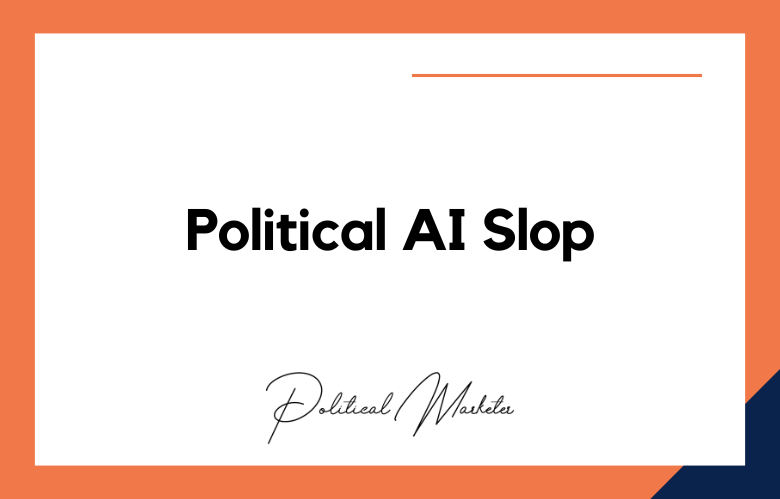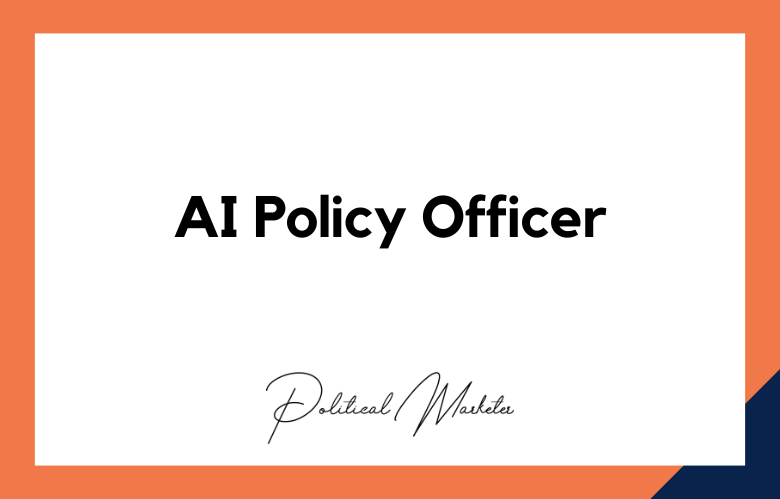The world of marketing has changed with the evolution of technology. Today, organizations are turning to Artificial Intelligence (AI) to optimize their marketing campaigns by predicting consumer behavior. With AI-powered predictive analytics, businesses can forecast potential outcomes to develop better, more targeted, and effective campaigns. This will explore how AI can be utilized for predictive analytics and campaign forecasting.
Understanding Predictive Analytics
Predictive analytics uses data, statistical algorithms, and machine learning techniques to identify the likelihood of future outcomes based on historical data. In marketing, predictive analytics uses data sets to identify patterns and behaviors of the target audience.
It allows marketers to make informed decisions about their audience and develop messaging that resonates with them. Machine learning algorithms can analyze data at scale, detecting patterns in consumer behavior to make predictions about future trends.
How AI is Revolutionizing Predictive Analytics
AI is changing how predictive analytics works, making processing vast amounts of data easier. AI-powered predictive analytics gives businesses a holistic view of their target audience by collecting data from various sources, including social media, web analytics, and transactional data.
Machine learning models can analyze patterns in consumer behavior more accurately and efficiently than traditional analytics tools. This helps organizations to identify new sales opportunities, improve customer retention, and optimize their campaigns.
The Benefits of AI for Campaign Forecasting
Campaign forecasting helps businesses predict the success of their marketing campaigns before they are launched. Using AI-powered predictive analytics, companies can forecast the effectiveness of their campaigns, allowing them to make data-driven decisions about where to focus their efforts.
AI can also help businesses determine which channels to use to reach their target audience based on the data gathered from their campaigns. Companies can allocate their budgets accordingly and save time and money by predicting success rates.
Leveraging AI for Consumer Insights
AI-powered predictive analytics can help businesses get to know their target audience better. Machine learning algorithms can identify consumer behavior and preference patterns by analyzing consumer data. This allows companies to customize their campaigns based on the insights gleaned from the data. AI can help businesses evaluate consumer feedback in real time, allowing them to change their campaigns quickly.
Implementing AI into Your Marketing Strategy
To implement AI into your marketing strategy, you must invest in AI tools and software that integrate with your existing marketing stack. Start by identifying the areas where you need predictive analytics the most and choose the AI tools that fit your business needs.
Once you have the tools, you must train your team to use them effectively. It’s also important to remember that AI-powered predictive analytics will become more accurate as it processes data over time.
The Future of Business Forecasting: Harnessing the Power of AI
As businesses strive to remain competitive in today’s rapidly evolving market landscape, they must leverage cutting-edge technologies to stay ahead of the curve. One such technology poised to revolutionize business forecasting is artificial intelligence (AI).
AI systems can analyze vast amounts of historical data, identify trends and patterns, and generate real-time forecasts. By harnessing the power of AI, businesses can make more informed decisions, reduce operational costs, and enhance their overall operating efficiency.
Moreover, AI-powered forecasting tools offer a level of accuracy unparalleled by traditional forecasting methods. With the ability to assimilate and analyze data from various sources, AI systems can generate highly accurate forecasts that consider complex variables and deliver precise predictions.
AI in Action: Streamlining Predictive Analytics for Campaign Success
In today’s digital age, businesses strive to perfect their marketing campaigns to achieve maximum success. To accomplish this, companies have increasingly turned to the rapidly expanding field of predictive analytics, which utilizes artificial intelligence (AI) to analyze massive amounts of data and make highly accurate predictions.
With AI’s help, predictive analytics can streamline the traditionally tedious and time-consuming process of collecting, analyzing, and interpreting data. By examining vast amounts of historical data, AI can develop predictive models that forecast future trends and identify potential areas of weakness in a company’s marketing strategy. This allows businesses to make more informed campaign decisions and adjust their tactics accordingly.
Unleashing the Potential: Using AI for Advanced Predictive Analytics and Campaign Forecasting
Unleashing the Potential of AI for Advanced Predictive Analytics and Campaign Forecasting is one of the most promising technological advancements of the contemporary world. The rise of AI in predictive analytics and forecasting is a testament to its ability to predict unpredictable outcomes and is paramount in developing cutting-edge solutions for problems that have challenged businesses for centuries.
Artificial Intelligence has taken the world by storm in recent years, and marketing analytics is one of the critical areas where it has made a notable impact. In the current business environment, marketing analytics has become an essential tool for businesses that seek to gain a competitive edge in the market.
However, today’s primary challenge is the volume of data that needs to be processed, analyzed, and interpreted to make sense of it. This is where AI comes in, capable of processing and analyzing vast amounts of data at lightning speed, making complex marketing analytics look effortless.
Next-level Insights: Enhancing Campaign Forecasts with AI
Artificial Intelligence (AI) has been a driving force in the marketing world for some time now. AI-powered tools are used to drive deeper consumer insights, optimize advertising campaigns, and develop predictive models that help businesses make informed decisions. Campaign forecasting is one area where AI is making a significant impact.
AI-powered forecasting tools can analyze vast amounts of data to provide businesses with accurate predictions of campaign performance. With more data being generated daily, AI-powered forecasting tools have become essential for marketers to stay ahead of the competition.
From Data to Decisions: Leveraging AI for Predictive Analytics and Campaign Forecasting
As businesses continue to embrace the power of data, the role of artificial intelligence (AI) in predictive analytics and campaign forecasting has become increasingly important. Utilizing AI in these areas has the potential to unlock valuable insights and drive more informed decision-making.
With the ability to analyze large amounts of data quickly and accurately, AI can identify patterns and trends that may not be visible to human analysts. This can lead to more precise predictions about customer behavior, market trends, and campaign effectiveness.
One of the key benefits of AI in predictive analytics and campaign forecasting is its ability to learn and adapt continuously. The algorithms can adjust and refine their predictions as data is fed into the system, leading to increasingly accurate insights.
Breaking Barriers: Optimizing Campaigns with AI-driven Predictive Analytics
As the world becomes increasingly digital, more than traditional marketing approaches are needed to keep pace. In today’s data-driven world, marketers need to leverage advanced technologies to make more informed, data-driven decisions. One such technology is AI-driven predictive analytics, which can help marketers optimize their campaigns to achieve better results.
Predictive analytics uses advanced algorithms to analyze vast amounts of data and identify patterns and insights that can be used to make informed predictions about future events. With AI-driven predictive analytics, marketers can tap into the power of machine learning to analyze data in real-time, automatically predict customer behavior, and optimize their campaigns accordingly.
By analyzing past performance data, marketing teams can better understand what works and what doesn’t regarding their campaigns. Through AI-driven predictive analytics, marketers can identify the factors that significantly impact campaign performance, including customer demographics, purchasing behavior, and user engagement.
Conclusion:
AI-powered predictive analytics can help businesses make data-driven decisions, develop better campaigns, and anticipate future trends. Organizations that embrace AI for predictive analytics and campaign forecasting will have a competitive advantage over businesses that rely on traditional methods.
By identifying impossible patterns for humans to spot, AI can help companies make more informed decisions about their marketing strategy. It’s time to harness the power of AI to take your marketing to the next level.
Call: +91 9848321284
Email: [email protected]
Frequently Asked Questions (FAQs)
What is predictive analytics in political campaigns?
Predictive analytics uses historical and real-time data to forecast voter behavior, election outcomes, and campaign performance through AI models.
How does AI enhance predictive analytics in elections?
AI processes large datasets, identifies patterns, and generates accurate forecasts, enabling data-driven targeting, messaging, and resource planning decisions.
What types of data are used in political predictive analytics?
Election results, voter demographics, polling data, fundraising records, social media activity, and sentiment analysis are familiar sources.
How can AI forecast election results?
AI models analyze turnout rates, voting history, demographic trends, and real-time sentiment to project election outcomes.
What role does machine learning play in campaign forecasting?
Machine learning detects trends, segments voters, and predicts behavior by continuously learning from updated datasets.
Can AI identify swing or undecided voters?
Yes. AI segments voter data to highlight undecided or persuadable groups, enabling focused outreach in competitive areas.
How accurate are AI-powered political forecasts?
Accuracy depends on data quality, model design, and external events. When properly implemented, AI often outperforms traditional forecasting. (Consider citing examples or studies.)
What is voter microtargeting, and how does AI support it?
Microtargeting uses AI to build detailed voter profiles and deliver personalized messages based on interests, behavior, and past engagement.
How does predictive analytics improve resource allocation?
It identifies regions and voter segments with the highest impact potential, guiding efficient time distribution, funds, and outreach efforts.
What tools support AI-based political forecasting?
Platforms include IBM Watson, Google AI, Microsoft Azure ML, TensorFlow, H2O.ai, and campaign-specific voter analytics software.
How does AI track shifts in voter sentiment?
AI analyzes social media, news, and online discussions to detect changes in tone, topic frequency, and engagement levels.
What does natural language processing (NLP) contribute to forecasting?
NLP interprets language from speeches, posts, and articles to extract sentiment, key issues, and emerging political themes.
Can predictive analytics optimize media spending?
Yes. AI forecasts which channels, messages, and timing yield the best returns, reducing budget waste and increasing impact.
How does forecasting help prepare for campaign crises?
By simulating scenarios, AI anticipates potential risks and equips teams with preemptive response strategies.
Is valuable AI for local and regional campaign forecasting?
Yes. AI adapts to local data, providing granular insights that improve targeting and planning at the constituency level.
How does AI assist with real-time decision-making?
AI dashboards deliver live performance metrics, allowing campaigns to adjust strategies based on current voter trends and engagement data.
What ethical concerns arise from using AI in politics?
Key issues include data privacy, algorithmic bias, lack of transparency, and the potential misuse of microtargeting. (These concerns often warrant further citation or regulatory reference.)
How do descriptive, predictive, and prescriptive analytics differ?
Descriptive explains past outcomes, predictive forecasts future trends, and prescriptive suggests actions based on predictions.
How are AI models trained for campaign forecasting?
Campaigns input voter, behavioral, and performance data into machine learning models, refining them for election-specific goals.
Why is AI essential to modern political strategy?
AI delivers rapid, actionable insights that help campaigns adapt to voter behavior, media shifts, and opponent strategies.










